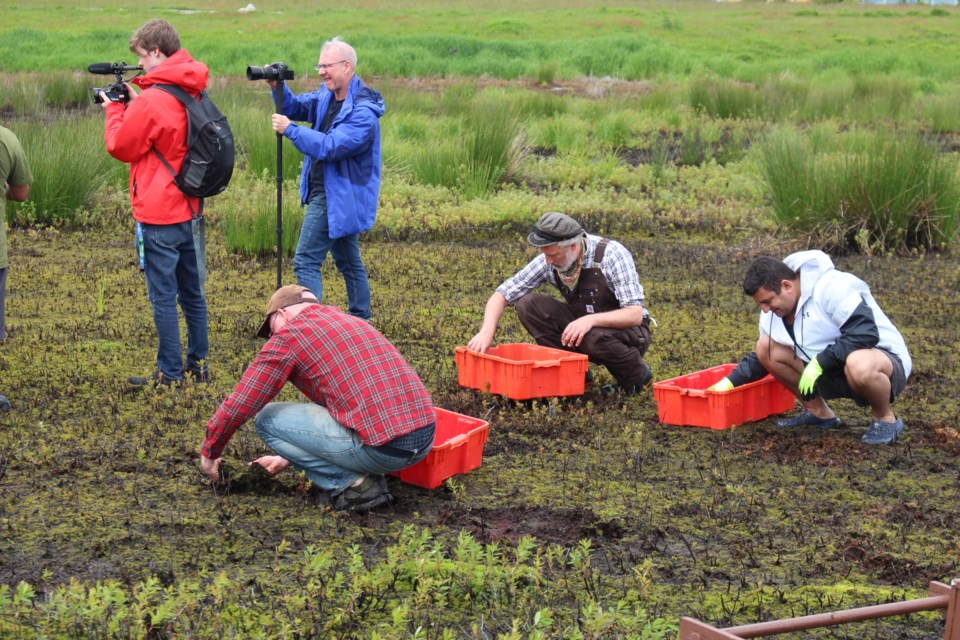A group of community members met at Garden City Lands this weekend for an important mission — transplanting sphagnum moss.
“We’re moving peat, live sphagnum, from one area, rescuing it, and moving it to another area so that it can actually carry on living prior to the continuation of expanding the agricultural land here,” explained Kathy Dunster, the faculty lead on the urban ecosystems program at Kwantlen Polytechnic University (KPU).
To do so, the small team scooped up surface layers of the peat with their hands and put them into trays. They then put those layers into little bogs which are essentially shallow holes they dug out with shovels.
Sphagnum is peat, Dunster added, but it’s the part that’s alive. Peat is the nonliving stuff underneath the moss that grows up in layers.
“(Sphagnum) is the coolest moss,” said Christine Thuring, a horticulture instructor at KPU. Like Dunster, Thuring is also a wetlands enthusiast.
But what makes sphagnum so cool?
“There are all sorts of different species of sphagnum. Some of them like to grow in the hollows where there are depressed areas, some of them like to grow on top. And so they have this whole sort of pecking order of sorting out the habitat to fit with their needs,” explained Dunster.
Peat stores carbon
So why is it important to save the moss? The answer is simple — carbon emissions.
Sphagnum moss tends to hold onto water because it likes wet environments, which helps keep the peat from decaying, according to Michael Bomford, who spearheaded the project.
Bomford teaches in KPU’s sustainable agriculture program and has been instrumental in conserving Garden City Lands.
Richmond is an island created over thousands of years from many layers of sphagnum, meaning there is a lot of peat.
“(Thick peat deposits) represent a tremendous carbon store. All of this carbon dioxide that’s been pulled out of the atmosphere by this sphagnum over the millennia has not been released back because the sphagnum didn’t decompose,” said Bomford.
If the environment changes and the peat dry out, bacteria and fungi would be able to get in and the peat would decompose.
“And that carbon that was stored over the millennia, is released back into the atmosphere. So a peat bog can become a massive source of greenhouse gas emissions if it’s allowed to dry,” Bomford added.
On the other hand, if sphagnum moss continues to grow on the peat and keep it active, it will pull more carbon out of the atmosphere.
“And so this environment can either help us from a global warming perspective, or it can make things worse, depending on how we treat the peat,” said Bomford.
Bog conservation
Community members are also transplanting the moss for the sake of protecting the bog in Garden City Lands.
“We’re really lucky to have a bog in the centre of Richmond, and this is a 5000-year-old bog, and it has a shining legacy for our future generations,” said Sharon MacGougan, president of the Garden City Conservation Society.
The moss transplant is a community conservation effort, and MacGougan hopes to see a vibrant bog restoration project take place in Richmond so future generations can experience nature and be close to it as they grow up.
“Peat bogs are a kind of wetland globally that is in trouble. They are an ecosystem at risk… and so anything that we can do to protect bog habitat is super important,” said Dunster.
Community members will be trying their best to transplant as much of the sphagnum moss as possible before the area gets covered with dirt for farming.



